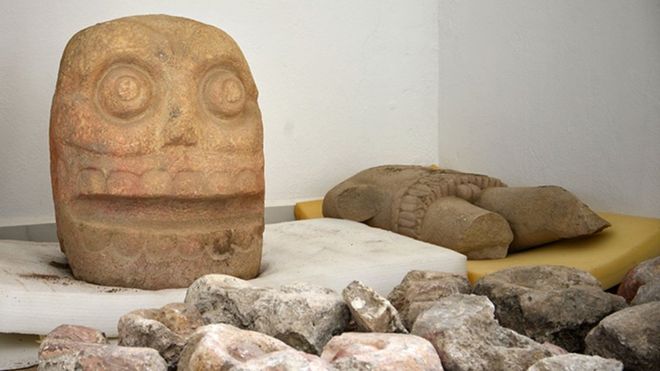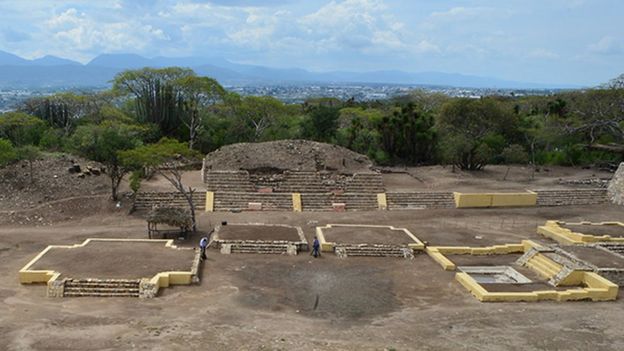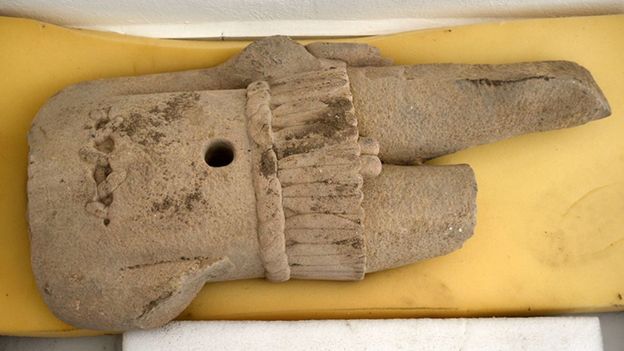For the customs of the people are vain: for one cutteth a tree out of the forest, the work of the hands of the workman, with the axe.
They deck it with silver and with gold; they fasten it with nails and with hammers, that it move not.
They are upright as the palm tree, but speak not: they must needs be borne, because they cannot go. Be not afraid of them; for they cannot do evil, neither also is it in them to do good.
Forasmuch as there is none like unto thee, O Lord; thou art great, and thy name is great in might.
Who would not fear thee, O King of nations? for to thee doth it appertain: forasmuch as among all the wise men of the nations, and in all their kingdoms, there is none like unto thee.
But they are altogether brutish and foolish: the stock is a doctrine of vanities.
Silver spread into plates is brought from Tarshish, and gold from Uphaz, the work of the workman, and of the hands of the founder: blue and purple is their clothing: they are all the work of cunning men.
But the Lord is the true God, he is the living God, and an everlasting king: at his wrath the earth shall tremble, and the nations shall not be able to abide his indignation.
Thus shall ye say unto them, The gods that have not made the heavens and the earth, even they shall perish from the earth, and from under these heavens.
He hath made the earth by his power, he hath established the world by his wisdom, and hath stretched out the heavens by his discretion.
When he uttereth his voice, there is a multitude of waters in the heavens, and he causeth the vapours to ascend from the ends of the earth; he maketh lightnings with rain, and bringeth forth the wind out of his treasures.
Every man is brutish in his knowledge: every founder is confounded by the graven image: for his molten image is falsehood, and there is no breath in them.
They are vanity, and the work of errors: in the time of their visitation they shall perish. Jeremiah 10:2-15
In contrast to the God of the Bible, pagan gods can be very cruel in the demands they place on their devotees. As reported by BBC News, January 3, 2019 (links in original):
The sculptures were discovered during an excavation of pre-Aztec era ruins
Archaeologists believe the discoveries prove the Toltec-era temple was dedicated to the God
Experts identified the sculpture as Xipe Tótec - a significant God from the pre-Hispanic era
Archaeologists in Mexico say they have made an important discovery, uncovering a temple to Xipe Tótec - the pre-Hispanic "Flayed lord".See also my post:
Historically, throughout the region, priests paid tribute to the deity by wearing the skin of human sacrifices.
Items relating to the deity were discovered at a site in Puebla state, and believed to date from 900-1150 AD.
Mexican archaeologists say the find may be the earliest dedication to Xipe Tótec discovered in Mexico.
Worship of the God, who represents fertility and regeneration, is known to have later spread throughout Mesoamerica during Aztec times.
The INAH say the 85cm (33in) ceramic effigy of the god was found in relatively good condition, though some parts are unattached.
They say a right hand was hanging by his left arm, symbolising the skin of a sacrificed person hanging over him.
"Sculpturally it is a very beautiful piece," leading archaeologist Noemi Castillo said in a press release.
"It measures approximately 80cm (31in) and has a hole in the belly that was used, according to the sources, to place a green stone and 'endow them with life' for the ceremonies. "
Two large skulls, believed to be carved from imported volcanic stone and weighing about 200kg (440lb) each were also discovered.
Archaeologists from INAH believe the skulls were used as covers for holes placed in front of two sacrificial altars where they believe sacrifices to him were buried.
All of the materials discovered have been sent to laboratories for official registering and further analysis.
[Xipe Tótec] is thought to have first appeared in the pre-Aztec era and is usually depicted in sandals, a loincloth and wearing the skin of human sacrifice.
The festival of Tlacaxipehualiztli, which means to wear the skin of the skinning, was dedicated to him during spring during the Aztec period.
It involved selected captives being sacrificed, sometimes by staged gladiatorial fights, before they were skinned and hearts cut out in homage of the God.
Priests commemorating the festival then wore the skins during ceremonies in dedication.
The archaeologists behind the find in Mexico believe the sculpture they found of him is the earliest ever recovered.
Bodies of 44 young victims of pagan sacrifice discovered in Peru (December 17, 2011)








































No comments:
Post a Comment